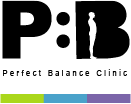Experiencing pain around your elbow? Struggling to grip onto things? If you have been feeling these kinds of symptoms for a while, then follow these comprehensive steps to help manage your tennis elbow.
Understanding Tennis Elbow
Tennis elbow, otherwise known as lateral epicondylitis, is a condition which affects the elbow joint and is a result of overusing the muscles involved in extension more than they can handle. The primary area affected are the tendons that attach around the area. These tendons can become inflamed and develop tiny tears, leading to pain and discomfort.
Despite being dubbed “tennis elbow”, you don’t necessarily have to play tennis to get lateral epicondylitis. It can be caused from regular day-to-day activities such as repetitive use from carrying heavy objects or grocery bags, or gripping onto handheld tools for long periods of time. Even professions that require repetitive arm movements or gripping actions, such as painters, plumbers, carpenters, and even butchers, can lead to this condition.
Symptoms and Diagnosis
The symptoms of tennis elbow develop gradually, often starting as mild pain and slowly worsening over weeks and months. Common symptoms include pain or burning on the outer part of the elbow, weak grip strength, and sometimes, pain at night. Discomfort may also radiate towards the wrist, particularly when engaging in tasks that require forearm utilisation.
If the discomfort in your elbow persists despite resting for several days, it is recommended to consult with a healthcare professional. The professional will examine for signs of swelling and tenderness, and perform initial assessments. In some instances, additional tests such as X-rays, MRI scans, or electromyography (EMG) may be conducted to exclude other potential conditions.
Managing Tennis Elbow
So how do we help fix this issue?
RICE
For short-term relief, implement the RICE concept (Rest, Ice, Compression, Elevation). Try not to completely stop using your elbow so that the healing process can continue, but just take a step back and allow for some recovery.
Self Massage
This is a simple method to use at home by yourself and is effective when done correctly. Try not to massage over the tender region itself but rather the muscles around it that run down the forearm.
Strength
For more long-term benefits, eccentric exercises are the most effective way to recover from tennis elbow. Eccentric exercise is when a muscle is lengthened while performing a movement. Examples of this for tennis elbow are wrist pronation and wrist flexion exercises.
Other treatment modalities include shockwave therapy, acupuncture/dry needling, and a full rehabilitation programme. In severe cases or when conservative treatments don’t work, surgical intervention may be considered. Other treatments like steroid injections, platelet-rich plasma (PRP), and extracorporeal shock wave therapy may also be used.
Preventing Tennis Elbow
Proactive steps encompass preserving arm flexibility and strength, refraining from repetitive motions, engaging in warm-up routines prior to exercise, and employing suitable equipment for specific activities.
For further questions and advice regarding this, don’t hesitate to get in contact with a member of our team so we can help you to reach your goals! Remember, it’s important to seek professional advice if symptoms persist or worsen.
If this article and video resonated with you then…
This article was written by our team of specialist therapists at Perfect Balance Clinic. If you would like more specific advice about how our team can help you with this condition or symptoms you may be having, please complete the contact form below and one of the team will get back to you shortly.










